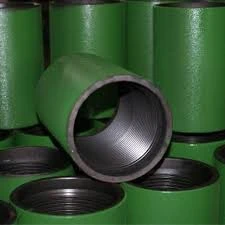- Afrikaans
- Albanian
- Amharic
- Arabic
- Armenian
- Azerbaijani
- Basque
- Belarusian
- Bengali
- Bosnian
- Bulgarian
- Catalan
- Cebuano
- Corsican
- Croatian
- Czech
- Danish
- Dutch
- English
- Esperanto
- Estonian
- Finnish
- French
- Frisian
- Galician
- Georgian
- German
- Greek
- Gujarati
- Haitian Creole
- hausa
- hawaiian
- Hebrew
- Hindi
- Miao
- Hungarian
- Icelandic
- igbo
- Indonesian
- irish
- Italian
- Japanese
- Javanese
- Kannada
- kazakh
- Khmer
- Rwandese
- Korean
- Kurdish
- Kyrgyz
- Lao
- Latin
- Latvian
- Lithuanian
- Luxembourgish
- Macedonian
- Malgashi
- Malay
- Malayalam
- Maltese
- Maori
- Marathi
- Mongolian
- Myanmar
- Nepali
- Norwegian
- Norwegian
- Occitan
- Pashto
- Persian
- Polish
- Portuguese
- Punjabi
- Romanian
- Russian
- Samoan
- Scottish Gaelic
- Serbian
- Sesotho
- Shona
- Sindhi
- Sinhala
- Slovak
- Slovenian
- Somali
- Spanish
- Sundanese
- Swahili
- Swedish
- Tagalog
- Tajik
- Tamil
- Tatar
- Telugu
- Thai
- Turkish
- Turkmen
- Ukrainian
- Urdu
- Uighur
- Uzbek
- Vietnamese
- Welsh
- Bantu
- Yiddish
- Yoruba
- Zulu
bull plug pipe fitting
Understanding Bull Plug Pipe Fittings
Bull plug pipe fittings are an essential component in many industrial applications, often utilized in piping systems to seal off ends and prevent unwanted leakage. These fittings play a crucial role in maintaining the integrity of a piping system, ensuring that fluids or gases are securely contained within the pipes. Understanding the various aspects of bull plug fittings can help you make informed choices for your next project.
What is a Bull Plug?
A bull plug, often referred to as a pipe plug, is a type of fitting that is typically used to close the ends of pipes. Unlike regular plugs, bull plugs have a slightly tapered design that enhances their ability to seal tightly within the pipe. This design helps to accommodate variations in pipe dimensions and contributes to a more secure seal. Bull plugs are available in various materials, including steel, brass, plastic, and stainless steel, which allows for flexibility depending on the application’s requirements.
Applications of Bull Plugs
Bull plugs are utilized in various industries, such as oil and gas, water treatment, and construction. They are commonly found in systems that require secure closures to prevent leaks and maintain pressure. For example, in the oil and gas industry, bull plugs are often used in pipeline connections and equipment to prevent contamination and ensure safe operations. In residential applications, they can be used in plumbing systems to cap off unused pipe ends.
bull plug pipe fitting

Installation and Maintenance
Installing a bull plug is relatively straightforward. It usually involves threading the plug into the pipe end and tightening it to achieve a proper seal. However, it is essential to ensure that the threads are compatible and that the fitting is made of appropriate material for the fluids being transported. Regular maintenance checks are also advisable to ensure that there are no signs of wear or degradation, which could compromise the seal over time.
Choosing the Right Bull Plug
When selecting a bull plug, there are several factors to consider, including the material, size, and pressure ratings. It’s crucial to choose a fitting that matches the specifications of your piping system to ensure optimal performance. Consulting with a knowledgeable supplier can help you identify the right bull plug for your application, considering all relevant factors such as temperature, pressure, and fluid type.
In conclusion, bull plug pipe fittings are a vital part of piping systems, providing a reliable solution for sealing pipe ends. Whether you’re working in industrial settings or residential plumbing, understanding these fittings will help you achieve a safer and more efficient system.
-
Tubing Pup Joints: Essential Components for Oil and Gas OperationsNewsJul.10,2025
-
Pup Joints: Essential Components for Reliable Drilling OperationsNewsJul.10,2025
-
Pipe Couplings: Connecting Your World EfficientlyNewsJul.10,2025
-
Mastering Oilfield Operations with Quality Tubing and CasingNewsJul.10,2025
-
High-Quality Casing Couplings for Every NeedNewsJul.10,2025
-
Boost Your Drilling Efficiency with Premium Crossover Tools & Seating NipplesNewsJul.10,2025







